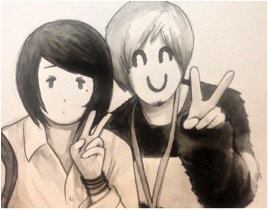The Pervert’s Remy Boydell Interviews Manga Master Inio Asano
Asano is the Creator of A Girl on the Shore, Goodnight Punpun, Nijigahara Holograph & the Recently Imported Dead Dead Demon’s Dededede Destruction
Main Art by Remy Boydell/Inio Asano Comics Features Inio Asano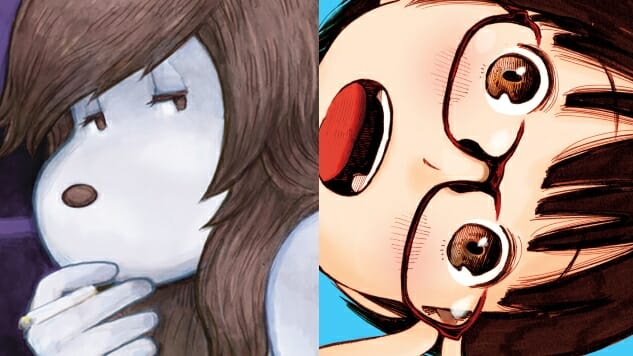
[When The Pervert artist Remy Boydell approached Paste about interviewing prolific, acclaimed manga mastermind Inio Asano, we couldn’t say no. Asano is the creator behind such wildly diverse works as A Girl on the Shore, Goodnight Punpun, Nijigahara Holograph and the recently imported Dead Dead Demon’s Dededede Destruction. What follows is Boydell’s transcript of the chat, translated from the Japanese in which it was conducted.]
I’m Remy Boydell, and I came to The Toronto Comic Arts 2018 Festival for the launch of my debut graphic novel, The Pervert. I was lucky to be able to chat with Inio Asano for a while, and I’ve translated our conversation from Japanese to English. Asano-sensei was appearing at TCAF as a featured guest, having travelled from Japan to Canada in support of the release of his series Dead Dead Demon’s Dededede Destruction, published in English by VIZ Media.
There’s a single panel I buried in The Pervert, based on Aiko in Goodnight Punpun.
I can’t fully remember what I was reading a few years ago when I made the book, but I remember reading Goodnight Punpun. I felt like I understood the sense of humor that created the character design for Punpun—the super-harsh realism of the writing coexisting with disruptive visual childishness, until, suddenly, Punpun isn’t childish anymore. It’s a slice-of-life series which gradually builds into something profoundly bleak.
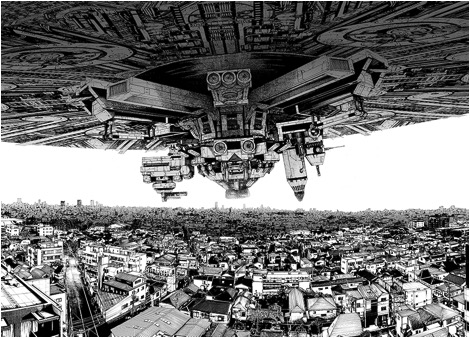
(DEAD DEAD DEMON’S DEDEDEDE DESTRUCTION © 2014 Inio ASANO/SHOGAKUKAN)
Goodnight Punpun felt like the most “complete” work I’d ever read. It wasn’t just the harsh writing that made the work feel “true,” but the extent to which the world is built out with glimpses of secondary media that the characters interact with—comics, porn, boyband magazines, websites—all laid out precisely but organically. Equally, the human groups that exist within Asano-sensei’s work feel natural, from schoolyard in-groups to cults, political protesters and chan-site regulars.
I was taken with an interview that Asano-sensei did with Naoki Urasawa, manga creator and host of Manben, a television show that interviews various contemporary manga artists about their work process. Asano-sensei’s approach to digital versus traditional art is maximalist; the time “saved” by processing reference pictures digitally to underpin backgrounds simply means more time to work back into them with ink, pulling the work together into a unified whole.
I don’t know, dude. I totally fell in love with the work. I spent a month arduously brushing up on my Japanese to prepare. Asano-sensei came with a large entourage of representatives from Shogakukan who sat down the table during our conversation, mostly silent. We were able to have an honest and insightful conversation under their supervision.
![]()
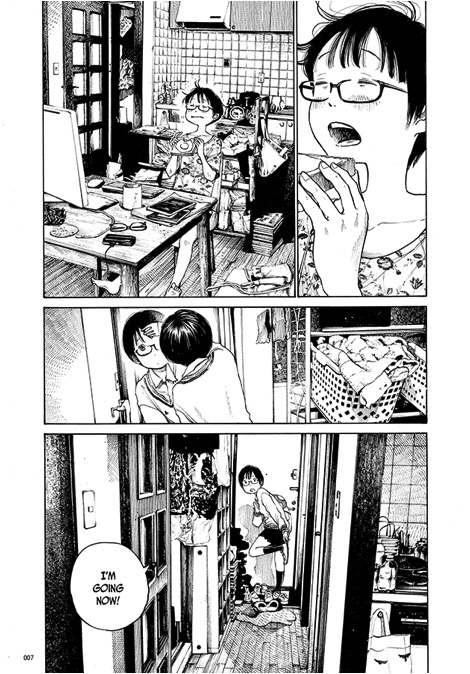
(DEAD DEAD DEMON’S DEDEDEDE DESTRUCTION © 2014 Inio ASANO/SHOGAKUKAN)
Remy Boydell: How many pages do you turn in a week?
Inio Asano: Let’s see… Usually, for the most part, if I’m fast, 15 pages.
Boydell: Really? That’s actually the same as me—although my work is incredibly rough in comparison.
Asano: How many pages are you doing?
Boydell: If I’m fast, 15 pages. But that was with this really simple square panel layout.
Asano: Oh, don’t say that, you’re using color as well!
Boydell: Yeah, since it’s watercolor, I can do them pretty fast.
Asano: But since drawing and writing the storyline are different jobs, during the time I’m not drawing I’m doing zero pages a week.
Boydell: Since my ex-girlfriend was writing the story for this book, [The Pervert] was a bit easier for me. It’s kind of based on her real experiences. This character is meant to be reminiscent of Peanuts newspaper strips, this bean-faced dog.
Asano: This is the character that’s modelled on her?
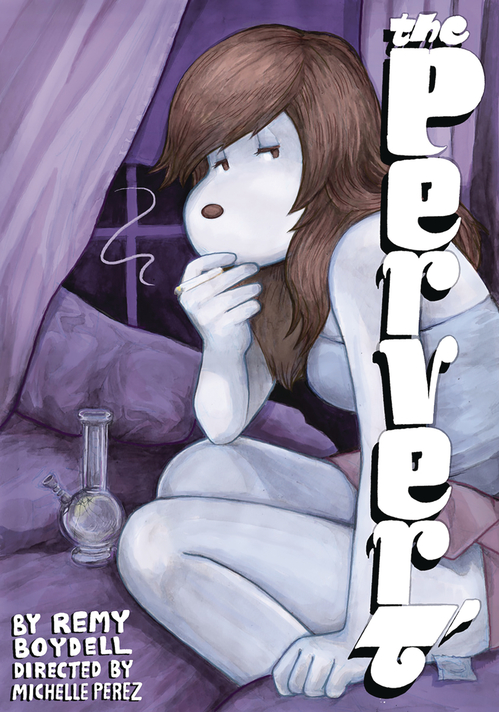
The Pervert Cover Art by Remy Boydell
Boydell: Yeah! That’s right.
So, when you’re working, do you listen to music?
Asano: I used to like rock bands a lot, like Radiohead for instance.
Boydell: Oh really? I love Radiohead.
Asano: Also Oasis, and KISS. Recently though, just going through my YouTube recommendations is good for me. These days, I’m always listening to playthroughs of video games.
Boydell: You mean “Let’s plays”!?
Asano: Yeah, that kind of thing.
Boydell: In your work, there’s this cruelty that’s present in everyday life, as well as this comedic aspect. Could you maybe talk about that balance a little?
Asano: Originally I was drawing gag manga, comedy manga. I really wanted to be a gag manga artist. However, the editor felt that I didn’t suit it—they said my work was all turning out fairly boring. It wasn’t a good fit for me at all. So I stopped and ended up drawing story manga along the way.
Boydell: But in Dead Dead Demon’s, the Isobeyan stuff was totally a perfect fit for Doraemon!

(DEAD DEAD DEMON’S DEDEDEDE DESTRUCTION © 2014 Inio ASANO/SHOGAKUKAN)
Asano: Oh, really?
Boydell: Since you also love GeGeGe no Kitaro, was the name of that series something you were thinking of when it came to naming Dededede?
Asano: Huh…not really. Speaking of titles generally, it’s normal to shorten a long title like that.
Boydell: Oh jeez, it was just me thinking it was a GeGeGe reference then. They’re fun names though.
Asano: I just wanted a long and impactful title.
Boydell: In your work, your characters have things like freckles, or big front teeth—things that I don’t see drawn very often. They have a very distinct charm to them. Did you enjoy drawing them like that?
Asano: Definitely. I really did. How to say this… A “beautiful” person, or a “cool” character—they all have kind of the same face. I want them to have everyday flaws. The setting as well, I was thinking, I wanted it to have its own idiosyncrasies. The people living in that setting should also reflect that charm as much as possible. In that way, they’re connected by cuteness. Also, as someone that has freckles, it felt good to draw them.
Boydell: I enjoyed it as well. You know, the girl with big front teeth [Makoto in Dead Dead Demon’s] has become very popular.
What do you think of recent manga and manga artists?
Asano: Hm… Let’s see… I can only speak at length in terms of Japan, but: recently there is a lot of work that’s very simple to understand—it’s still fun, of course, the work coming out is very easy to understand. I feel like it’s lacking somehow.
Boydell: I see. So you’d like to see more work like from Garo Magazine) ?
Asano: Garo? Well, although I like Garo, I read Garo…err…
I read Garo for sure, but that kind of thing didn’t sell well at all. Maybe having work that’s somewhat Garo-esque is okay, but when I’m writing, I want my work to be a bit more accessible to everyone than Garo Magazine. That’s part of my job. If it were just me reading it…
Boydell: So it’s like, you enjoy reading that sort of thing by yourself, but you want your work to have a more mainstream appeal?
Asano: Yeah.
Boydell: I see—I’m sorry, I didn’t really know the connotations of Garo Magazine well. I subtitled a documentary about Nekojiru, and so I developed an interest in it. Do you read American comics?
Asano: When I was in highschool, the American comics that were in fashion….X-Men and Spawn were coming out then, I read those.
Boydell: Oh, I’m happy, I think Spawn is from Image. There used to be an X-Men cartoon, didn’t there…?
Asano: Oh, they made that?

(DEAD DEAD DEMON’S DEDEDEDE DESTRUCTION © 2014 Inio ASANO/SHOGAKUKAN)
Boydell: The mix of traditional and digital in your work is really wonderful. How long have you been working like that for?
Asano: Since my first tankobon came out, I was working digitally as well.
Boydell: Since Solanin?
Asano: Earlier, before Solanin. However, no one knew what type of manga I was going to be making digitally. For my part I felt like I was still feeling it out myself, while I was drawing.
Boydell: I’m really interested in that kind of thing because [this] is watercolor, but I try to improve it digitally, to bring out the color a bit more strongly.
Asano: You said watercolor—so you’re using water as well here? Isn’t that kind of a hassle?
Boydell: No, no, since I’ve used this kind of fancy set for the last 10 years here, it just feels like part of my hand now. So I can really knock out the pages if I’m listening to music at the same time.
A long time ago I watched your Manben TV episode…
Asano: Uh huh!
Boydell: …But I didn’t have a working printer, so I’d turn the brightness up on my laptop screen a lot, and kind of lightly trace it off the screen with a pencil, for linework from photo references.
Asano: When I didn’t have any money, I would hold pages up the window, to use the light there to trace from.
Boydell: I was turning up my screen brightness higher and higher. [Laughs]
In Goodnight Punpun, at the start it’s a slice-of-life feeling comic. But after time, this feeling of cruelty becomes more pronounced, the tone changes. Was your aim to subvert your readers’ expectations with that?
Asano: This is also kind of like that Garo stuff before, in that I have to discuss the impact on sales… In the start, I had decided on writing a sad story, however, I thought readers might be turned off by the theme, so I decided to start the series with a heartfelt and easy-to-understand childhood story.
Among my readers, there were some people that were incredibly angry with me.
Boydell: [Laughs] So you were feeling a little bit mischievous. I’m glad. I think some of the stuff in my book kind of pissed off some people from 4chan, our version of 2-ch. They didn’t like it.
Asano: Looking at it, there’s plenty of explicit material in here. [Laughs]
Boydell: What were the comics that related to when you were a child?
Asano: Hm… Let’s see… When I was a child I really loved gag manga, so I read that type of thing a lot like Utsurun Desu [by Sensha Yoshida]. Four-panel strips, that kind of thing. The stuff that I got my hands on as a kid, some of it was kind of out there, the jokes were kind of obscure and hard to understand. I held onto the feeling that they gave me even into my adulthood. I really liked it.
Boydell: In terms of four-panel stuff, Pop Team Epic has become really popular with that anime coming out recently with an English-speaking audience.
Asano: Ah, Poputepipikku. Four-panel manga is mostly gag manga so it calls back to that classic era.
Boydell: Yeah, I get you. Asano-sensei, what kind of work do your assistants do?
Asano: Well, my in-house assistants do outlines on the backgrounds, like signs.
In addition to that, for example, the details of scheduling the releases of the manga, and putting together reference materials, lots of that.
The final stage of work that involves drawing characters, and computer work—that’s all me. So I’d say the staff help with organising matters that can more easily done by other people.
Boydell: So, first you draw in blue pencil, then on the computer you process your reference photos, and then after then you’re using a fine-liner and a G-pen…?
Asano: Yes, yes, yes, yes, yes, yes.
Boydell: I paid so much attention to your Manben episode!
Asano: You did good.
Boydell: I think that was everything, I ran out of questions.
[Shogakukan Representative]: You didn’t run out of questions, there’s another one.
Boydell: Oh, I see. I found another question.
[Everyone in the room laughs at me.]
Boydell: In your work, your ability to parody came across really well, could you speak about that a little?
Asano: When it comes to manga that everyone knows, for example, the main one in Dead Dead Demon’s is Isobeyan, it’s easy to put in, and it makes the story feel like a full world you can enter. Referencing media that everyone knows makes it easier to position yourself within world of the manga, and it creates connections within the work itself—that’s my intention when making it.
However, I wouldn’t really call it “parody,” since it’s not good if it’s too similar, but that’s getting into the nuance of it.
Rather, through all of this I’m considering, the manga that’s near to people, the influence that can have—since it definitely has an effect.
Boydell: It’s fun to see! So rather than being “parody,” I should instead be saying you’re using visual references that everyone within the work recognises. You also referenced the Akiba moe style).
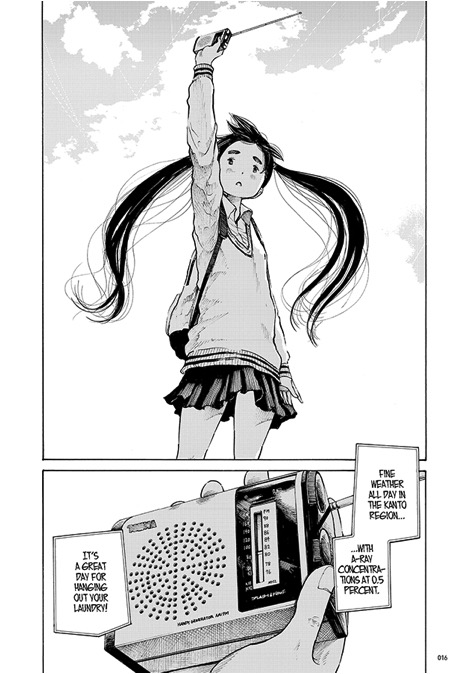
(DEAD DEAD DEMON’S DEDEDEDE DESTRUCTION © 2014 Inio ASANO/SHOGAKUKAN)
Asano: In the same way, the city is also an example—it’s a city that everyone knows, I want to create the sense of a place that you’ve already been.
Boydell: So this is similar to your theory that “the background should be a main character in its own right.” It’s an incredible thought.
When I was drawing The Pervert, the girl is in Seattle. I wanted the setting to take on a level of importance in this. I mean, I tried.
Asano: Sure, sure.
Boydell: The feeling of despair comes across so strongly in Punpun, but there’s also some hope in it, and in Dead Dead Demon’s as well, especially coming from the school girl characters.
Asano: Well, since it truly is manga after all, the reader doesn’t want only to be made sad to the exclusion of all other feelings.
How can I say—I think I might feel sad more than your average person. As feelings go, there are people who lean more towards the sad side of things. For me thinking in the role of Punpun, that everyday unhappiness is what becomes normal for us.
Boydell: It’s authentic sadness. Honne, right?
Asano: Yes, totally.
Boydell: The despairing feeling in Goodnight Punpun… I really felt like I could relate to it.
There’s a real balance to the despair and the energetic moments, and that balance is really important.
Asano: It would be useless if you couldn’t enjoy any of it.
Boydell: Yeah, If the whole thing was just too painful.
Asano: A long time ago, when I was young, I overdid it to some extent, trying to do happy and optimistic stories. The more I’ve considered it, I’ve come to believe that it’s best not to push yourself to do that, and instead make work that suits you more.
Boydell: Sure. That’s great to hear. A kind of “rough” touch is also really important in your work, right?
Asano: Rough touch…
Boydell: Like a traditional media kind of touch.
Asano: Yeah, purely digital work can have a kind of cold feeling to it.
It’s not just that though, it’s okay to use it for planning out the story. Specifically in relation to Dededede though, more than the story, I wanted to make the image myself, to draw the pictures myself.
With regards to my work, for example, like I just mentioned, I like the designs of Garo Magazine and older manga. Bringing my work a step closer to the kind of feelings those works have, that’s my preference.
Boydell: It’s clear that you’re not cutting any corners. It’s like you want to thoroughly explore what you can do with digital tools.
Asano: You know, although I’m bringing a rough touch to it, in some ways with digital tools, I’ve really come to settle on a process in my digital work now.
Boydell: Like hand-drawn screen tone and that… It’s really impressive.
Asano: What sort of comic do you think you’ll be drawing next?
Boydell: I had plans to collaborate with someone for a sci-fi series, but I think I might end up making something like that by myself instead. I wanted to write something weird.
Asano: Yeah.
Boydell: My next book is 920 LONDON, this thing is like 70% done. The protagonists still have that kind of bean shaped face—it’s set in London in 2005.
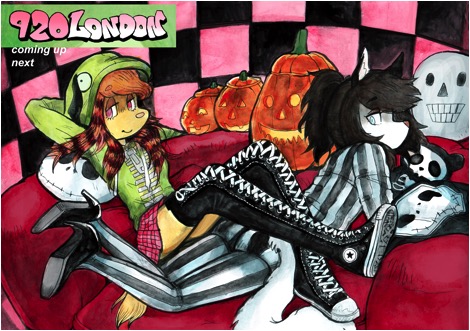
920 LONDON art by Remy Boydell
Asano: So this is what you’re drawing right now?
Boydell: That’s right. This is another watercolor one.
Asano: And then after this, science fiction?
Boydell: I think so, yeah.
Asano: Sci-fi sells. Well, apart from, in Japan, it doesn’t really sell well there, but…
Boydell: It’s super popular in American though, right. Some of it’s pretty basic though. If you can draw with a sense of broad scale visually, it can get really popular.
Asano: There are science fiction fans all over the world, however… I feel that number of fans isn’t increasing. It’s kind of like appreciation for heavy metal.
Boydell: You were into metal right?
Asano: Metallica, KISS…
Boydell: Do you know Faith No More?
Asano: No.
[Shogakukan Representative]: They are from California. They are not really popular in Japan.
Boydell: Do you like electronic music?
Asano: Electronica? Yeah, I like it.
Boydell: Talking was fun. Should we wrap up?
Asano: Okay. You really studied hard for this, huh?
Boydell: Can we take a selfie?
Asano: A selfie? Okay.
The first two volumes of Inio Asano’s series Dead Dead Demon’s Dededede Destruction are available in English from VIZ Media now.
